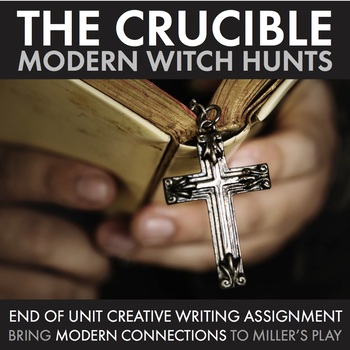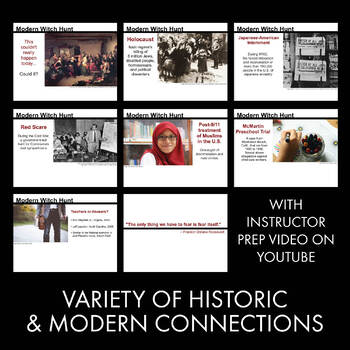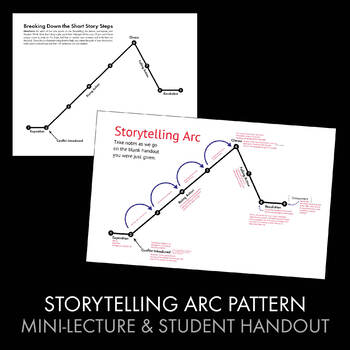Crucible, Modern Witch Hunts, Creative Writing, Arthur Miller Play, The Crucible
- Zip
What educators are saying
Description
Toward the end of my students’ study of Arthur Miller’s play, The Crucible, I launch a discussion about whether they think a similar scenario could happen today. Many times, students think the Puritans were especially gullible or foolish and they believe they are too savvy to fall under the spell of mass hysteria. This creative writing lesson proves them wrong as they work to make many connections between their own lives and the citizens of Salem, Mass., in 1692.
This product includes:
• A detailed suggest lesson procedures page
• Lecture/discussion materials showing examples in our recent history when people participated in modern-day equivalents of witch hunts, from the atrocities of WWII to the McMartin Preschool sex abuse scandal of the 1980s to current teachers whose careers have been destroyed by false accusations of physical and sexual misconduct. This is an 8-slide lecture in both Notebook format (for SMARTBoard users) and Powerpoint (for all users.) Also included is a link to a 10-minute video teachers can use as lecturer prep.
• Modern Witch Hunt creative writing assignment with six detailed story seeds to get students started on their modern scenarios.
• Storytelling Arc lecture (Prezi & Google Slides versions) and handout to show students the elements of narrative writing that must be included in their short story (exposition, conflict introduction, rising action, climax, falling action, resolution)
• Rubric sheet for easy grading
Please note that these lesson materials were designed for mature upperclassmen. The topics discussed will include academic cheating, teen drinking and driving, fear of HIV/AIDS, and false accusations of sexual and physical abuse against teachers/authority figures. Historic examples of witch hunts in this lesson include: the Holocaust/search for Jews, homosexuals, disabled people, and dissenters of the Nazi regime; the treatment of Japanese Americans during WWII/Internment camps; McCarthyism/Red Scare/Search for Communists in the U.S. during the Cold War; the treatment of Muslim Americans during post-9/11 climate of fear. These real-world issues help students deeply engage with the themes of The Crucible and my students really enjoy this assignment, but the material may make some people uncomfortable. Please do not purchase this product if you are uncomfortable discussing any of these topics with your students.
I use this creative writing assignment in place of a traditional literary analysis essay for this work of literature. The Common Core standards require that we include narrative writing in the 11-12th grade curriculum and this product is designed to meet those narrative writing requirements.
Want more materials to help get your students excited about The Crucible?
Click HERE for my catalog of Crucible-related lesson materials
Thanks for stopping by!
Cover image credit: Pexels, Public domain





